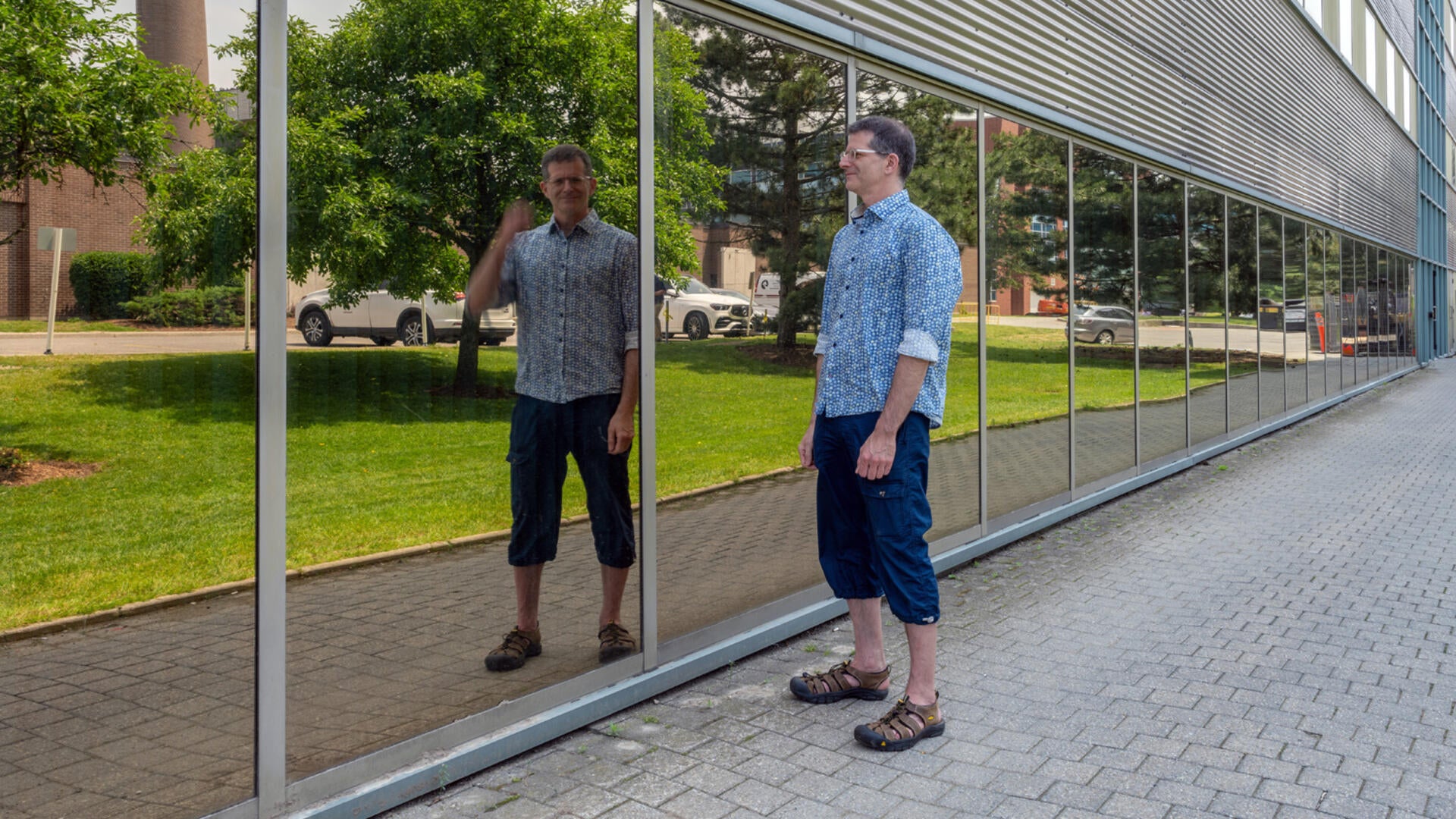Just months ago, an international team of four that includes Cheriton School of Computer Science professor Dr. Craig Kaplan discovered a single shape that tiles the plane - an infinite, two-dimensional surface - in a pattern that can never be made to repeat.
The discovery mesmerized mathematicians, tiling enthusiasts and the public alike.
The shape, a 13-sided polygon they called "the hat," is known to mathematicians as an aperiodic monotile or an "einstein," the German words that mean "one stone."
But the team's most recent discovery has raised the bar once again. They found another shape, related to the first, that meets an even stricter definition. Dubbed the "spectre," the new shape tiles a plane in a pattern that never repeats without the use of mirror images of the shape. For this reason, it has also been called a "vampire einstein" - a shape that tiles aperiodically without requiring its reflection.
"Our first paper solved the einstein problem, but as the shape required reflection to tile aperiodically people raised a legitimate question: Is there a shape that can do what the hat does but without reflection," Kaplan explains. "It was our good fortune that we found a shape that not only solves this subproblem, but also solved it so soon after the first paper."

Standing outside Waterloo's Davis Centre, Kaplan contemplates whether a shape and its reflection ought to be considered as distinct.
To mathematicians, the hat and its mirror image are a single shape, but in the physical world left-handed and right-handed shapes can behave differently. You can't, for example, wear a right-handed glove on your left hand.
"If you tiled a large bathroom floor aperiodically with hat-shaped tiles that had been glazed on one side you would need hats and mirror images of hats," Kaplan says.
But it was not this quibble that motivated the recent discovery.
The discovery of the vampire einstein began with the musings of David Smith, a retired print technician and self-described shape hobbyist from Yorkshire, England, whose curiosity months earlier led to the original einstein discovery.

As shown in this looping animation, the hat is one member of a morphing continuum of shapes created by increasing and decreasing edges to produce a tiling that requires reflected shapes to ensure the pattern never repeats. But one member of this infinite set of shapes - known technically as Tile(1,1) - is not an aperiodic monotile. Tile(1,1) generates periodic tiling. However, if you force it to tile without reflections, it tiles only aperiodically. It is a non-reflective or vampire einstein.
"Dave emailed us a couple of days after our hat paper went online to say that he had been playing around with a related shape that seemed to be behaving strangely," Kaplan says. "Yoshiaki Araki, a Japanese mathematician and well-known artist whose work is in the spirit of MC Escher, had posted pictures of Tile(1,1) that got Dave interested in looking at it further."






